A Reappraisal of Tullio Campagnolo
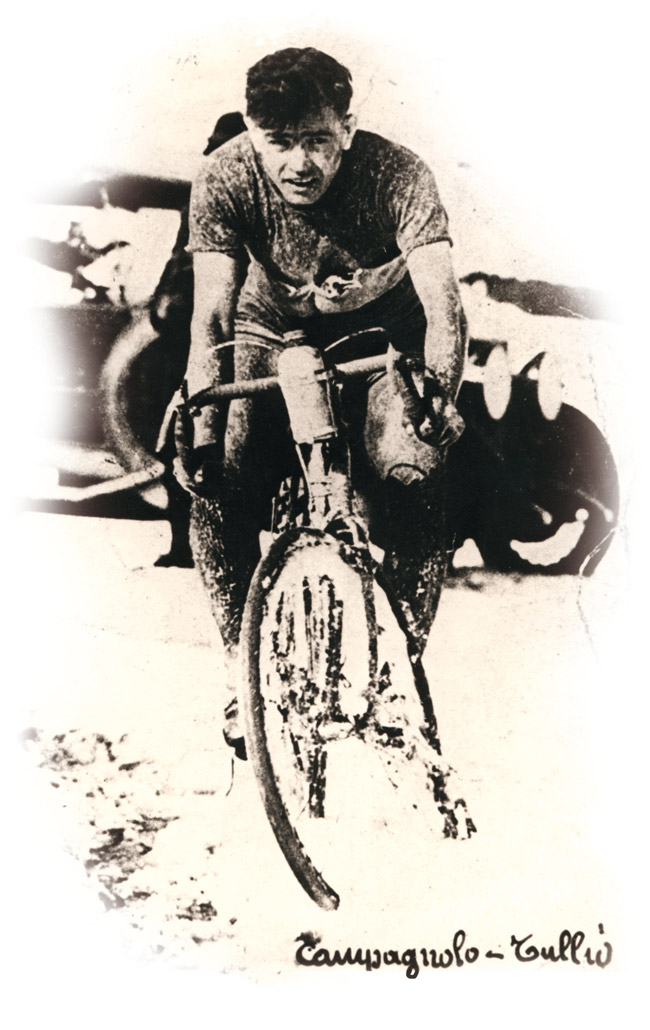
When Bicycle Quarterly did an article on Tullio Campagnolo, you knew it wasn’t going to be another fluff piece re-hashing the same old stories and myths. We did some real research, and we were surprised by what we uncovered.
Cyclists who know their history have heard how in 1927, Campagnolo raced in the Gran Premio della Vittoria, got stuck in the snow when he could not open the wingnuts on his rear wheel, and lost the race. He then invented the quick release, which became the foundation of the company that bears his name.
That is the legend, but what is the real story of Campagnolo? Working with well-known cycling historian David Herlihy and other experts, we’ve pieced together the history of Campagnolo. Based on research in European archives, patent searches and contemporary accounts, the conclusions were published in a 19-page article in the Summer 2014 Bicycle Quarterly. The true story is different from the myth, but it’s no less fascinating.
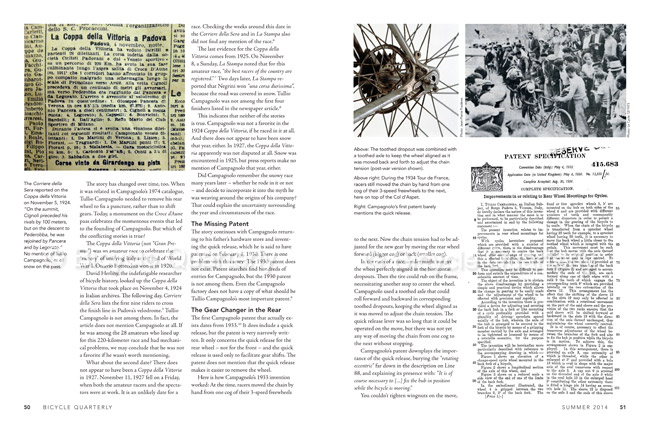
Campagnolo was less of an inventor of ground-breaking innovations, and more of a visionary who foresaw trends and even shaped them. He adopted other manufacturer’s promising, but overlooked, ideas. He showed great ingenuity in improving those ideas to give racers exactly what they wanted.
Back to the quick release: It appears that Campagnolo did not invent it at all. The story of the race in the snow is a myth. There was a snowy Coppa della Vittoria, but in a different year (1925), and Campagnolo isn’t mentioned in the race reports as a favorite in any of the Coppas della Vittoria of the 1920s.
The original patent for the quick release, said to date from 1930, does not exist. Later patents by Campagnolo are written very narrowly for improvements or special features of the quick release, indicating that he could not patent the cam-actuated quick release itself.
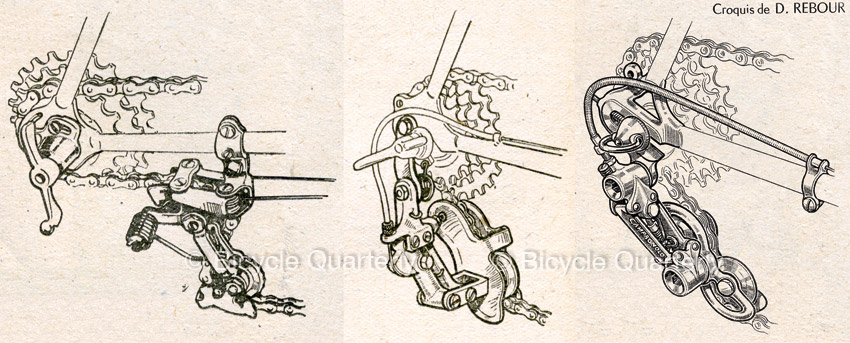
Campagnolo’s next major innovation was a parallelogram derailleur, which introduced the general shape and operating principle for all rear derailleurs to this day. Campagnolo got this idea from a French cyclotouring derailleur, the Nivex (left). He was not the first to adapt the parallelogram derailleur for racing bikes, either: That honor goes to the JIC derailleur (middle). As so often, Campagnolo integrated these ideas into a product that was more elegant and better finished (right). His derailleur was successful where the other parallelogram derailleurs were not.
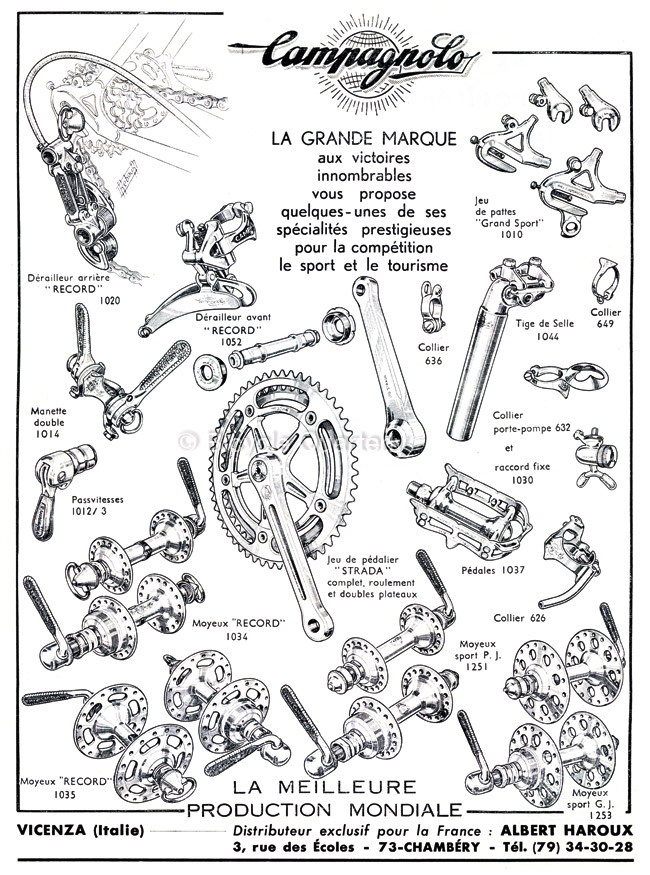
Campagnolo’s true strike of genius was the idea of the “gruppo” – a group of matching components. Before, customers of high-end bikes had to choose each component individually: brakes from Mafac, derailleurs from Simplex or Huret, hubs from FB, cranks from Stronglight or Gnutti, etc. Tullio Campagnolo made the customer’s choice easy by offering a full group of components. “Full Campy” became the hallmark of a top-of-the-line bike during the 1970s bike boom.
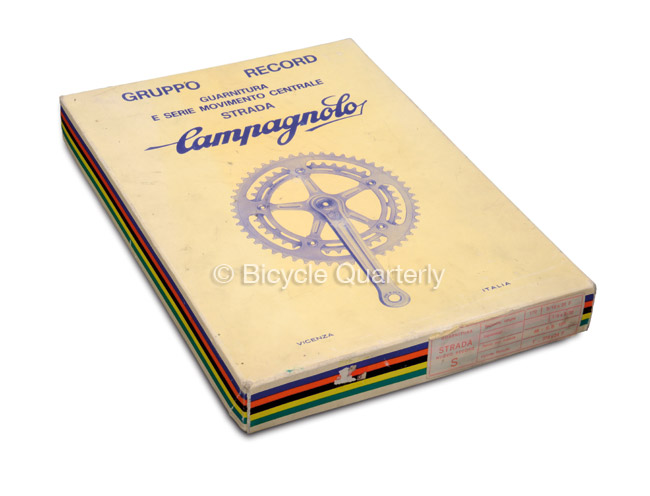
Campagnolo focused on the complete customer experience long before Apple popularized the concept. Campagnolo’s packaging was beautiful. The components showed balanced proportions and a beautiful finish. The quality was without reproach. The parts were easy to install and pleasant to use. Campagnolo backed their components with an unconditional lifetime warranty. And the company sponsored so many professional racers that more than 90% of professionals rode on Campagnolo (below). As a result, Campagnolo dominated the high-end component market for decades.
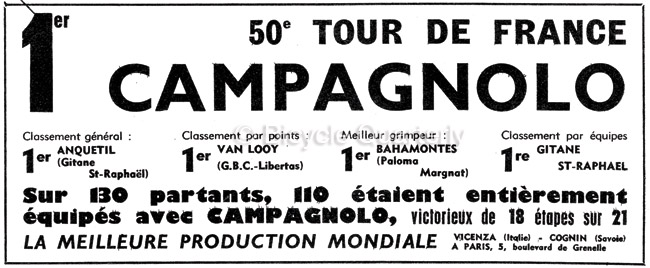
This is a major re-assessment of Campagnolo’s legacy. It reminds me of the re-evaluation of car maker Ettore Bugatti’s contribution in recent decades, from undisputed genius to a more human entrepreneur, who nonetheless imbued his products with a quality and mystique all of their own. I feel that understanding Tullio Campagnolo’s true contributions, as a visionary more than as an inventor, will only increase the appreciation of him and his company.
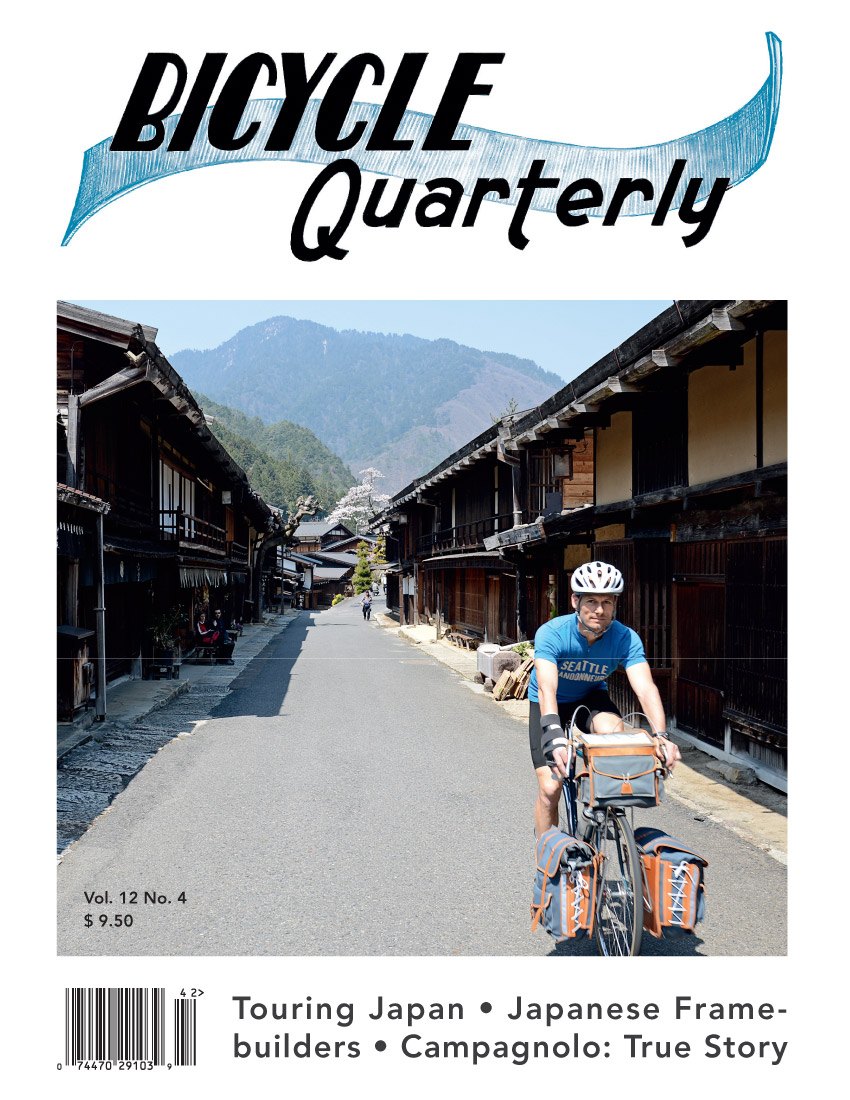
The Bicycle Quarterly article delves into many other questions. Why did Campagnolo patent and introduce his quick release not as a wheel retention mechanism (as we know it today), but only as a shifting aid? Why did he introduce a Nivex-style chainrest in the 1970s? Why did a French inventor who developed bar-end shifters and a novel front derailleur become the distributor for Campagnolo in Paris? And why did Campagnolo not continue to develop his components during the 1970s, which left an opening for Shimano’s rise in the 1980s? It’s a fascinating story – it probably would make a great movie!
Click here for more information on the Summer 2014 Bicycle Quarterly.


